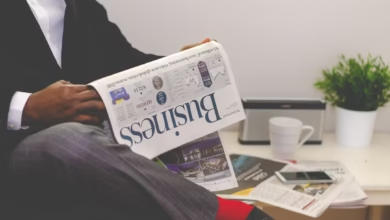Navigating Inflation and Interest Rates: Understanding Their Relationship and Strategies for Inflation-Proof Investments

Inflation remains a critical economic factor that significantly influences borrowing costs and overall financial stability. As we navigate through fluctuating economic landscapes, understanding the relationship between inflation and interest rates is essential for both consumers and investors. This article delves into the complexities of inflation, exploring its various causes—such as wage inflation, supply chain disruptions, and energy prices—and the types of inflation, including hyperinflation, stagflation, and disinflation.
We will also examine the pivotal role of central banks and how their monetary and fiscal policies shape inflation metrics, directly impacting interest rates. With rising costs affecting the cost of living and long-term financial planning, it is crucial to identify effective inflation-proof investments that can safeguard retirement savings against the backdrop of global inflation trends. By understanding inflation expectations and historical inflation patterns, we can better navigate today’s economic challenges. Join us as we unpack these essential topics and provide actionable strategies for managing inflation and its impact on debt and financial growth.
- 1. Understanding Inflation: Causes, Types, and Their Impact on Interest Rates
- 2. The Role of Central Banks: How Monetary and Fiscal Policies Shape Inflation and Borrowing Costs
- 3. Inflation-Proof Investments: Strategies for Navigating Rising Costs and Securing Retirement Savings
1. Understanding Inflation: Causes, Types, and Their Impact on Interest Rates
Understanding inflation is crucial for anyone looking to comprehend the broader economic landscape, especially when it comes to its relationship with interest rates. Inflation refers to the general increase in prices and the subsequent decline in purchasing power. Various factors contribute to inflation, known as the causes of inflation, which can be categorized into several types, including demand-pull inflation, cost-push inflation, wage inflation, and built-in inflation.
Demand-pull inflation occurs when the demand for goods and services exceeds their supply, often leading to higher prices. Conversely, cost-push inflation arises from increased production costs, such as rising energy prices or supply chain disruptions, which force businesses to pass those costs onto consumers. Wage inflation, a subset of cost-push inflation, happens when labor costs rise, further driving up prices.
Hyperinflation is an extreme form of inflation characterized by rapid and uncontrolled price increases, which can destabilize economies. Stagflation, another critical type, combines stagnant economic growth with high inflation and unemployment rates, creating a challenging environment for policymakers. Disinflation refers to a reduction in the rate of inflation, which can signal a cooling economy.
The impact of inflation on interest rates is significant. Central banks often use monetary policy to manage inflation levels, adjusting interest rates to either stimulate economic growth or curb excessive inflation. When inflation metrics, such as the Consumer Price Index (CPI) and Producer Price Index (PPI), indicate rising prices, central banks may increase interest rates to slow borrowing and spending, helping to stabilize the economy. Conversely, in a low-inflation environment, they may lower interest rates to encourage borrowing and investment.
Fiscal policy also plays a role in addressing inflation. Government spending and tax policies can influence economic growth and the cost of living, which in turn affect inflation expectations. For instance, significant government stimulus can lead to increased demand, potentially resulting in inflationary pressures.
Investors must consider inflation when planning for their financial future. Inflation-proof investments, such as real estate, commodities, and certain digital currencies, can provide a hedge against rising prices. Understanding global inflation trends is essential for making informed decisions about retirement savings and inflation and debt strategies.
In summary, inflation is a multifaceted economic phenomenon that profoundly influences interest rates and economic growth. By comprehensively understanding the causes and types of inflation, individuals and policymakers can better navigate the complexities of today's economic landscape and develop effective inflation strategies.
2. The Role of Central Banks: How Monetary and Fiscal Policies Shape Inflation and Borrowing Costs
Central banks play a pivotal role in managing inflation and influencing borrowing costs through their monetary and fiscal policies. By adjusting interest rates, central banks aim to control inflation levels, which can stem from various causes, including supply chain disruptions and rising energy and food prices. When inflation metrics such as the Consumer Price Index (CPI) or Producer Price Index (PPI) indicate rising prices, central banks may increase interest rates to discourage borrowing and spending, thereby stabilizing the economy.
Monetary policy is the primary tool used by central banks to combat inflation. For instance, when inflation expectations rise, signaling potential wage inflation or cost of living increases, central banks may implement contractionary monetary policies. These strategies can include raising interest rates or reducing the money supply, which helps to control inflation but can also slow down economic growth. Conversely, in times of stagflation, where inflation and unemployment rise simultaneously, central banks face the challenging task of balancing these competing economic pressures.
Fiscal policy also plays a significant role in shaping inflation and borrowing costs. Government spending and tax policies can influence economic activity and inflation rates. For example, excessive government spending can lead to currency devaluation, which may contribute to inflationary pressures. On the other hand, fiscal restraint can help mitigate inflation by reducing demand in the economy.
As global inflation trends evolve, central banks must remain vigilant and responsive to changes in the economic landscape. They often rely on historical inflation data and current inflation trends to inform their decisions. This includes monitoring inflation hedging strategies, such as inflation-proof investments and the performance of real estate in times of rising prices.
In summary, the interaction between central banks’ monetary policies and fiscal policies is crucial for managing inflation and determining borrowing costs. As they navigate the complexities of inflation, central banks play an essential role in maintaining economic stability and ensuring that inflation remains within target ranges, protecting consumers' purchasing power and retirement savings from the adverse effects of rising inflation.
3. Inflation-Proof Investments: Strategies for Navigating Rising Costs and Securing Retirement Savings
Inflation-Proof Investments: Strategies for Navigating Rising Costs and Securing Retirement Savings
As inflation continues to impact economies worldwide, understanding how to protect your retirement savings becomes increasingly crucial. The relationship between inflation and interest rates, influenced by various factors such as energy prices, food prices, and supply chain disruptions, underscores the need for effective inflation-proof investment strategies. Here, we explore several approaches to safeguard your investments against rising costs and ensure financial security in retirement.
1. **Real Estate Investments**: Real estate has historically been viewed as a reliable hedge against inflation. As inflation rises, property values and rental income tend to increase, providing a buffer against inflation erosion. Investors can take advantage of rising real estate inflation by purchasing rental properties or real estate investment trusts (REITs) that generate consistent cash flow.
2. **Inflation-Protected Securities**: Government-issued securities, such as Treasury Inflation-Protected Securities (TIPS), are designed to adjust with inflation. Their principal value increases with the Consumer Price Index (CPI), ensuring that the investment maintains its purchasing power over time. This type of inflation-proof investment is especially appealing for conservative investors looking to protect their retirement savings from currency devaluation.
3. **Commodities and Precious Metals**: Investing in commodities like gold and silver can serve as an effective inflation hedge. These tangible assets often retain value during periods of hyperinflation or stagflation, when the cost of living increases significantly due to rising wages and other economic pressures. Additionally, energy prices and food prices can influence commodity markets, making them a valuable diversification tool in an inflationary environment.
4. **Digital Currencies**: With the rise of digital currencies, investors are exploring new avenues for inflation hedging. Cryptocurrencies, while volatile, can offer protection against inflation and currency devaluation in certain economic conditions. As global inflation trends evolve, understanding the role of digital currencies in a diversified portfolio may provide unique opportunities for growth.
5. **Equities and Dividend Stocks**: While equities can be affected by inflation and interest rates, companies that have strong pricing power can pass on increased costs to consumers, thereby maintaining profit margins. Dividend-paying stocks, in particular, can provide a reliable income stream that grows over time, helping to combat the effects of wage inflation and rising living costs.
6. **Diversification and Global Investments**: To navigate inflation trends effectively, consider diversifying investments across different asset classes and geographical regions. This strategy can help mitigate risks associated with localized inflation impacts and capitalize on varying economic growth rates worldwide.
In conclusion, navigating inflation and securing retirement savings requires a proactive approach to investment. By incorporating inflation-proof investments like real estate, TIPS, commodities, digital currencies, and dividend stocks into your portfolio, you can safeguard your financial future against rising costs. Staying informed about economic indicators, such as CPI and PPI, in conjunction with understanding the implications of monetary and fiscal policy, will empower you to make strategic investment decisions that align with your long-term retirement goals.
References:
– Federal Reserve Economic Data (FRED). (2023). Retrieved from https://fred.stlouisfed.org/
– U.S. Bureau of Labor Statistics. (2023). Retrieved from https://www.bls.gov/cpi/
– Investopedia. (2023). Inflation-Protected Securities. Retrieved from https://www.investopedia.com/terms/t/tips.asp
In summary, understanding the intricate relationship between inflation and interest rates is crucial for navigating the complexities of today's economic landscape. As we have explored, inflation can stem from various causes, including supply chain disruptions, rising energy and food prices, and wage inflation, each contributing to different types of inflation such as hyperinflation and stagflation. The role of central banks cannot be overstated, as their monetary and fiscal policies are pivotal in shaping inflation metrics, including the Consumer Price Index (CPI) and Producer Price Index (PPI).
As inflation expectations rise, so too do interest rates, impacting borrowing costs and influencing key financial decisions. For individuals and investors alike, implementing inflation-proof investments is essential to safeguard retirement savings and maintain purchasing power amid increasing costs of living. Strategies such as real estate investments and exploring digital currencies can serve as effective inflation hedging tools.
As we look toward the future, staying informed about global inflation trends and historical inflation will empower individuals to make sound financial choices. Understanding inflation and its effects on debt, economic growth, and interest rates is not merely an academic exercise; it is a vital part of ensuring financial stability in an ever-changing economic environment. By adopting proactive inflation strategies, individuals can better navigate the complexities of inflation and secure their financial future.





